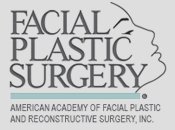Facelift and Neck Lift in Encino, CA
Facial rejuvenation techniques like the facelift and neck lift can help restore a youthful appearance to the face and neck. Using the most current technological advancements and surgical techniques, we can produce dramatic results that still appear natural.
Facelift and neck lift surgery, also known as rhytidectomy, can correct:
- A double chin and jowls
- Loose skin and muscles of the face and neck
- Shallow or concave cheeks
- Volume loss
- Deep nasolabial folds
- Marionette lines
- Vertical neck banding
Am I a Candidate for a Facelift and Neck Lift?
Patients who are concerned with their facial aging and are in good health may be candidates for facelift and neck lift surgery. Natural results, comfort, and safety are our priority when providing a surgical plan, at your consultation we will examine you and listen while you share your facial aesthetic goals.
While there is no age requirement, candidates for facelift and neck lift surgery should be healthy adults who do not smoke (or who are willing to stop), have realistic expectations of their results, and are unhappy with the signs of aging.
What Is Discussed During My Facelift Consultation?
Communicating your medical history, concerns, and questions about facelift and neck lift surgery is essential during your consultation. Your surgeon will evaluate your facial anatomy and make recommendations that align with your preferences and desired outcome. These recommendations may include additional facial rejuvenation procedures that target the upper portion of the face, including the eyelids (blepharoplasty), forehead, and skin quality that may not be addressed by a facelift.
How Is a Facelift and Neck Lift Performed?
Facelift and neck lift surgery are usually performed under general anesthesia. Some patients may qualify for local anesthesia; this will be discussed during your consultation.
Facelift and neck lift incisions start in the hairline at the temples and continue down and around the ear. They are easily concealable within natural skin folds, leaving almost imperceptible scars. An additional incision may be made beneath the chin to address the neck and tighten neck bands.
Dr. Persky prefers the “deep-plane” facelift technique popularized by worldwide expert facelift surgeons. This repositions the deeper tissue layers of the face that have descended with age. Unlike other facelift techniques, the deep plane technique does not detach the facial skin from the underlying tissues. Instead, these tissues remain attached and are lifted together.
How Long Is My Facelift Recovery?
A light head wrap is used for the first day or two following surgery. Drains are typically not needed. Post-operative care instructions will be provided and should be carefully followed. Mild bruising, swelling, numbness, tightness, and slight discomfort for the first few days is normal. Keeping your head elevated can help reduce swelling. It is important to rest with your head elevated throughout your recovery, even while sleeping. Prop yourself up with pillows or sleep in a reclined chair.
Prescription pain medications are provided to ease discomfort during the healing process. Many patients can resume work and daily activities after seven to 14 days.
What Results Can I Expect From My Facelift?
Your face and neck skin should appear tighter and smoother, and you should look years younger. The improvement in neck sagginess can span to the upper chest. In the face, the mid-face, nasolabial folds, the jawline, and jowls are improved. Facial rejuvenation is designed to restore a naturally youthful appearance and assist patients in looking as young on the outside as they feel on the inside.
Frequently Asked Questions
Will my facelift results be permanent?
Facelift and neck lift procedures provide long-lasting results that age naturally with your face. Most facelift results can last up to eight to 10 years. You can help prolong your outcome by avoiding direct sunlight and wearing sun protection every day. The results of face/neck lift can be said to last your lifetime, as you will always look younger than you would have had you not had the procedure.
You can also consider non-surgical facial enhancement procedures, such as injectables like BOTOX® Cosmetic, Sculptra® Aesthetic, or dermal fillers, microneedling with PRP, or energy treatments like Ultherapy® , Profound RF, or laser resurfacing.
Is there a non-surgical alternative to a facelift?
While the above non-surgical treatments can address unwanted fine lines and wrinkles, increase collagen production, and improve skin tone, they cannot offer the same correction as a facelift and neck lift can.
Can I get a facelift without a neck lift?
Most patients combine facelift and neck lift techniques because the skin ages at the same rate. Correcting one without the other may cause the face to look unbalanced.
What is the best age to get a facelift?
There is no set age that is best to get a facelift and neck lift. Some patients choose to undergo surgery at the first signs of aging before significant changes occur in the lower face and neck. If you are concerned with your facial aging, schedule a consultation with Dr. Persky today to discuss what your options are. Younger patients may be treated non-surgically if they are not yet good candidates for surgery.
When can I resume work and exercise after my facelift and neck lift?
Every patient will recover at a different rate, but most patients can resume work at one week to 10 days. More strenuous activities and exercise can usually be resumed at three to four weeks.
How much is a facelift in Encino, CA?
Facelift and neck lift surgeries are customized to meet the needs of each patient, which means that the price of every procedure will vary. Anesthesia options, surgical facility fees, surgeon’s fees, and post-operative dressings and medications all play a role in the cost of the procedure. A cost estimate will be provided during your consultation.
Will my facelift address my entire face?
No, despite its name, facelift surgery treats signs of laxity on the lower-two thirds of the face and neck. This surgery does not address the area around the eyes. If you are experiencing laxity in the upper or lower eyelids, blepharoplasty can be combined with your facelift (and is commonly performed at the same time). If you have lines and wrinkles around your eyes or forehead, you may be better suited following up your facelift with an injectable treatment like BOTOX® Cosmetic, dermal fillers, microneedling with PRP, or laser skin rejuvenation.




